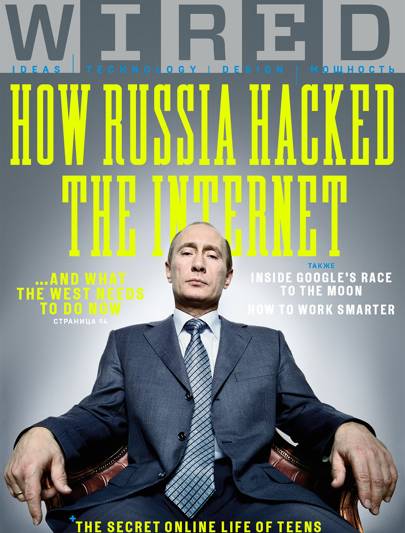The secret online world of British teens: how streaks, deep likes and ghosting define young lives
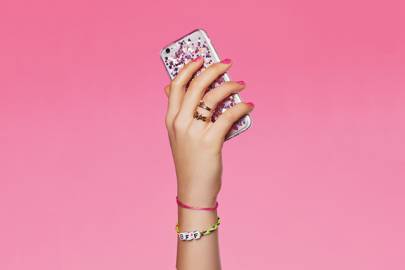
You can set your watch by Maia. Every morning, her smartphone's screen glows purple with a new Snapchat story. There are photos of pavements, friends and the occasional disheartened post about the time of the morning or the amount of work to do. "I don't think I could live without it," she says.
Our conversation, held mostly on the app's chat function, gets off to an odd start. As a reporter, I ask if it's OK to save every message sent for the record. In doing so, I'm breaking the first rule of Snapchat. There's laughter (demonstrated by a "haha" and 😭 ) before Maia explains that, "The whole point of Snapchat is you can say what you want and then it's gone."
Teenagers spend a large chunk of their time together at school, but come the peal of the school bell, they were once able to head home and potentially live other lives. Now teens broadcast online 24/7, to friends and strangers alike, unable to hide some parts of their existence.
Advertisement
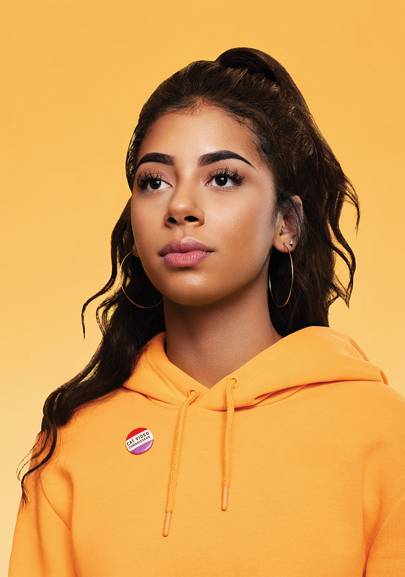
Maia, 17, Tyneside
Read next
Like many of the teenagers I interviewed for this story, Maia is big on Snapchat Stories, recording her life in several-second snippets. By viewing her posts over the course of a few weeks, it's possible to build up a picture of Maia the person. She's a gym fanatic, but hates the 6.45am starts that requires. She enjoys meeting friends and is keen to take quick photographs to record the memories, but she'll occasionally place an emoji over her own face if she doesn't look great. "I looked VILE and didn't want anyone to see," she explains, adding 😢 and 🔫 , a sign of the seriousness of posting a less-than-pristine photo.
When she's taking selfies, she makes sure her phone is in flight mode to ensure she can upload a few, then choose the best before posting it.
Advertisement
"With Instagram and Snapchat you get to control what people see from your life," she says. That's not to say she isn't filtering that view of everyday life: "If I have an unhealthy day, I probably won't let anyone see," she admits - though she'll share selfies with friends overlaid with Snapchat's dog filter.
The 17-year-old, with carefully preened eyebrows, dark brown eyes and a warm smile, has 2,500 followers on Instagram, but currently has just six pictures on her profile. She estimates she's uploaded around 200 in all, but regularly deletes them. "It's not so much about the likes," she explains. "It's more I start to hate the look of my Instagram because I have too many selfies or too many edits. I like it to look a bit more professional."
Maia is a minor social-media celebrity among local people her age. She says she was an ugly duckling when younger, but found popularity after discovering make-up, fitness and selfies. As a result, "I feel like I have to look a certain way." Her friends tell her that people ask who she is and if they can have her number or be her friend. Those she does accept sometimes fall into the most cringeworthy social media faux pas imaginable: the dreaded deep like (accidentally favouriting an old post on Instagram when scrolling back through someone's feed). "If that happens, you need
to just crawl into a hole and never come out," she jokes.
Read next
Maia admits she has a love/hate relationship with social media. She feels pressured into public displays and yet, every day, some part of her life will be uploaded to her Snapchat. "Social media is a blessing and a curse," she says.
Advertisement
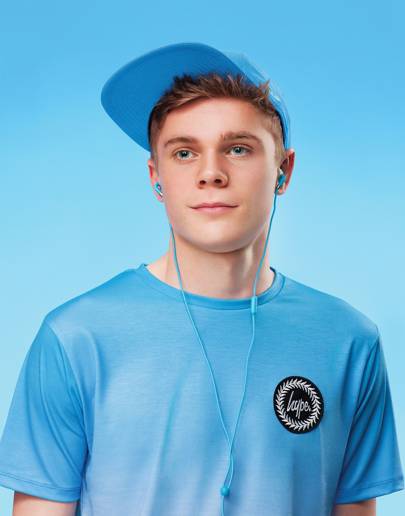
Andy, 16, Leicestershire
Andy sends 30 to 40 snaps to friends via Snapchat on an average weekday, and about 100 a day at weekends. "I just fit them in between homework and dinner and stuff in the evening," he says.
"I don't even realise I'm doing it sometimes 😢 ", he admits.
Read next
You might think Andy is glued to Snapchat - but it's not even his favourite app. That's Twitter. "It's simple and the most entertaining," he says. It's an odd amalgam of all the other channels: photos from Instagram, video from Facebook, and the direct-messaging functionality of Snapchat. "You just get the best of them all in one place."
He follows a number of sports profiles on Twitter, including The Sport Bible and other football pages. He prefers them to official websites because they're easier to read.

Fake News
Why Facebook and Twitter have a civic duty to protect us from fake news
For Andy, interaction on Twitter and Instagram is mostly one-way: receiving updates, rather than engaging in conversation. For that, he turns to Facebook and Snapchat. Most of his hundreds of conversations on Snapchat are brief and casual; selfies with a brief snippet of text. "Sometimes I use the Chat feature," he says, "but only when I need to send a longer message."
"I just don't want to put my face up for everyone to see," he says. "I'm not the type of person to take a
selfie and post it on Instagram. Generally it's girls who put selfies on Instagram." The rules around liking photos are complicated.
Read next
"Cyberbullying is a major downside of social media,"
Andy says. "People say a lot more behind a computer screen than they would in real life"
"I usually like all my friends' photos just because they're my friends," Andy explains. If he sees a great photo taken by someone who isn't his friend, he'll like it, but is unlikely to comment. Not so for other people, he says: "Girls tend to over-compliment each other; they say how pretty they all are," he says. "The person whose photo it is replies with something like: 'Says you.'" Andy says this happens a lot. "I laugh at it, but it makes me cringe slightly that girls are so over-complimentary just to get a compliment back. It all seems a bit desperate to me."
Of course, it's not always so complimentary. "Cyberbullying is a major downside of social media,"
Andy says. "People say a lot more behind a computer screen than they would in real life." It was a major issue for Andy and his friends between the ages of 11 and 14.
Although social media has its drawbacks, Andy thinks it is a good thing overall. "You can access so much from anywhere through your phone. Also, you can keep up to date with friends who you don't always see."
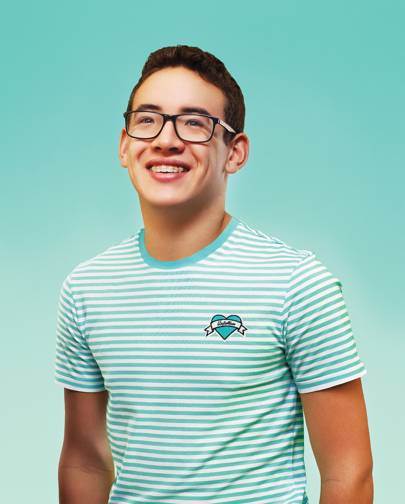
Read next
Hamish, 16, West Sussex
Hamish's Instagram feed gives little away about him: there are snow-dappled Alpine landscapes; a shot of a wristband earned at tennis camp; and videos, never showing his face, of him playing guitar. "I've never sent a selfie," he says. "It seems vain."
Hamish isn't alone: some of his friends also renounce the selfie lifestyle. Indeed, thinking of teens as the selfie generation might be a mistake. "Maybe it's the era of selfies," he reasons. "My older relatives have started to take selfies."
Hamish uses Snapchat and Instagram with his friends, WhatsApp with his family and Facebook for the odd private photo album (he estimates he's logged in to Facebook three times in two years). But, like many teens I spoke to, he keeps one aspect of his online life a secret from his parents: in his case, Snapchat. His parents are swayed by the mainstream media perception that it's only used for sexting. Hamish instead uses it to share small snippets of his life with a select few people he trusts.
Though emoji do appear in Hamish's chats, their time is coming to an end. "It's going out of fashion," he says. "People tend to put multiple xx's instead of emoji like 😍, 😘 and ❤️."
Read next
When I point out that's what people did before emoji, he concurs: "Teens have matured. More than three emoji is seen as a little immature nowadays."
Another aspect of social media Hamish dislikes is the constant broadcasting of one's life. "I've seen pictures of showers with the caption: 'Just had a shower,'" he says. He's also concerned by peer pressure to post photos on Instagram or Snapchat. "You can see people's friends urging them."
Hamish's Instagram is private; his Snapchat name is given out to only his closest friends; his face is hardly ever shown. Three weeks after he starts talking to me, it becomes clear why Hamish is so cautious. In messages, he explains that, in 2014, a boy at his school started up a conversation with an older man online. They met up and the boy, then 14, was stabbed to death.
Overnight, Hamish started to tighten up the security on his social media. "I guess I do it because I don't want that happening to me."
An Old's Guide to Mastering Emoji
- 😁
- Used when an awkward situation has arisen. Also signifies SnapChat kinship among users.
- 😂
- Tears of joy - the UK's most popular emoji in 2016, according to SwiftKey. Abida: "If something is funny, then I'd put that after it."
- 👍🏾
- Thumbs up. Well done everybody.
- 😷
- Gross; horrible; sickening - usually deployed to indicate that something is good.
- 😢
- Used for genuine emotion.
- 😏
- Hamish: "If you send this too often, girls won't be impressed at all."
- 😭 🔫
- Maia: "The absolute worst."
- ❤️
- Used for genuine emotion.
- 😍
- Used to declare unconditional support for a selfie.
Read next
Iulia, 13, West Midlands
The message from Iulia, heralded by a ping on my smartphone, is disarmingly blunt: "How do we
know that you're not like a pedo (not to be rude just being safe)?"
She is understandingly sceptical of a 27-year-old journalist contacting teenagers and asking them to talk about how they use social media. But once she's convinced of my credentials, she's effervescent, spilling out her life in a series of missives. As we converse on Twitter's direct message (DM), Iulia is juggling conversations on Snapchat and FaceTime.
Iuila sends me a screenshot of the top four most-used apps on her iPhone: leading the way, with 33 per cent of her total usage, is Twitter. Second is Snapchat with 28 per cent; Musical.ly (users share snippets of video showing them miming along to songs) third with ten per cent; and Instagram fourth, with six per cent. YouTube figures too, but only on her iPad.

Fake News
Monetising misinformation: inside the fake news capital of the world
Read next
And while olds (👴🏽) like me might use Twitter to broadcast their thoughts, teenagers are cannier; they parley rather than proselytise, stringing conversations together in public and chatting constantly in private. Iulia, shares a screenshot of her DM inbox: 34 private conversations in the past week, most of which are group chats. They have names like "Caspar's bum bums" and "Zalfie's courgettes" 🍆 . The people participating are self-avowed "stans" (stalkers-slash-fans) and "trash", they say. "Trash is someone who is Jaspar or phan trash when their ships consume their lives," Iulia clarifies. "I'm Jaspar, phan AND Zalfie trash."
"Teens have matured. More than three emoji is seen as a little immature nowadays"
("Jaspar" is an amalgam of famous YouTubers Joe Sugg and Caspar Lee; "Phan" combines Phil Lester and Dan Howell; "Zalfie" refers to partners Zoe "Zoella" Sugg and Alfie Deyes.)
Facebook singles you out online in the way a pensioner's bus-pass does offline. Iulia doesn't have a Facebook account, nor do her friends. "It's uncool because it's pointless, irrelevant and for old people," she writes.
Teens claim to find everything they need from different apps. Instagram is for sharing photos publicly; Twitter for talking to teen idols (and gossiping in DMs); Snapchat for everyday conversations. Though Iulia takes plenty of photos on Snapchat - her scores, calculated by a variety of opaque factors including the number of photos you send, is ten times that of mine.
Read next
It's not all YouTuber retweets and pop quizzes: late one night, Iulia retweets a series of messages of the aftermath of bombings in Syrian cities. She follows it up with: "I wish there was something I could do to make a change but I just don't know 😢".
But teens can be fickle, and bore easily. My conversation with Iulia had been going well; she revelled
in explaining the meanings of heart emoji (❤️ and 💙 are as different as a bat and a banana, apparently) to an 👵🏾. Then the communication stopped. She was still out there, happily tweeting away, but my questions went unacknowledged. I had been ghosted.
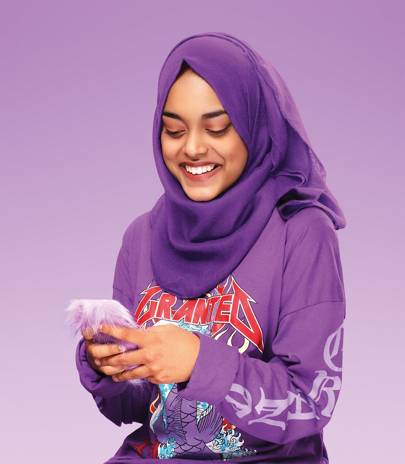
Abida, 14, London
Abida is an Instagram fiend. She has 700 followers on her profile, where she posts pictures of herself and friends. It's her most-used app, she says - up there with Snapchat. "Instagram has more videos to look at than Snapchat, and you can look at celebrities on there because more of them use it than Snapchat," she explains.
Read next
If you're wondering how a 14-year-old manages to meet 700 people who follow her, the reality is she doesn't. Many of the people she interacts with on Instagram are her friends, but a larger number are from neighbouring schools on the Isle of Dogs, casual acquaintances that she's rarely - if ever - met IRL (in real life). "Some people I know, but I don't go to the same school as them or anything," she explains. "That's how we keep in touch."
"It starts off talking about one thing and then goes on to another subject, just random conversations. It can become quite difficult keeping track of them. Sometimes I'm doing something else and then I have to scroll up to see what they're talking about"
Abida doesn't just flick through the endless scroll on Instagram's main page, commenting on photos she likes (❤️ and 😍 are among the most-used emoji on Abida's phone, small messages of support for an absolutely 🔥 shot) and pointedly ignoring photos posted by those she doesn't get on with. She also uses the app's DM feature to its fullest. "I've always got a lot of conversations going on at any one time," she says. "It starts off talking about one thing and then goes on to another subject, just random conversations. It can become quite difficult keeping track of them. Sometimes I'm doing something else and then I have to scroll up to see what they're talking about."
In Abida's social-network circle, Instagram rules the roost. In part, it's her preference for the app,
but there's also a more practical explanation: its popularity and user numbers. "Not many people are on Snapchat," she explains, bluntly.
She still uses Snapchat, using the filters to their fullest to send selfies to her friends ("as a joke"). She
also occasionally posts Snapchat Stories in which she mimics Musical.ly. "People look at my stories when I do that," she admits. She also has a Musical.ly account,
but usually only uses it to watch other people's posts.
Read next
As for Twitter and Pinterest, she doesn't see the point. "They're boring," she says. "On Pinterest
all you do is pin pictures on a board, and it's boring on Twitter."
Navigating one's way through the minefield of schoolground relationships can be a complicated business online. The tiniest misstep can set off an argument. The difficulties Abida has experienced range from outright bullying - "Sometimes people comment on other people's posts that they don't like" - to deliberate stoking of the fire - "Someone screenshots a chat and sends it to someone, then they find out and start arguments on the DM section." It all means that Abida - like many other social-media users her age - can be cautious about what she commits to on screen. "Sometimes, if you're talking to someone who is friends with someone else that you don't like, you have to be careful with how you talk to them because they could do that. It changes how I talk to people."
But for all social media's flaws and its ability to spark teenage tensions, Abida is upfront about her reliance on it. To her, it's a wellspring of chat and gossip, a way of keeping in touch with far-flung friends and a platform for discovery. If it were to disappear, she admits, "I think most of the
time I'd be really bored."

Anna, 15, The Cotswolds
Anna is upfront about her Snapchat usage. "I do have streaks," she admits, "but sometimes I don't know what all the fuss is about, really." The student, who has a big interest in computer science at school, is frank about the way she uses the app and the importance she places on maintaining "streaks" - when two users send at least one Snapchat to each other every day. "I still follow on with it. Everyone does. You feel obliged to keep it going."
Snapchat and Instagram are Anna's apps of choice. Her friends are currently testing out a new app en masse called Houseparty. "It's like Facetime, where you can talk with up to ten people on the same call," she explains. It became a big thing when a friend discovered it on the App Store at Christmas. It caught on - a viral success. Whether it lasts, of course, is another matter: "Having ten people on the call is confusing," Anna says. "It'll die down and get deleted at some point."
Anna's already run through Kik and WhatsApp, and found them not to her taste. As for Twitter, she doesn't see the point. "Older people use it more than people my age," she says.

Technology
How to boost your Twitter followers
Avoiding 👴🏼 is a big plus point for any apps that Anna and her friends use. Anna has a Facebook account that she uses for group messaging with her dance teams, to pass the time scrolling her news feed looking for funny videos (she follows "a couple of pages where they just post funny videos of people around the world," she says - "I think it's called The LADbible,") and to placate her parents, who are Facebook friends with her. "My dad's into social media," she explains. "I'm friends
with him on a few sites, but not all of them. You want a life of your own."
Anna's friended her dad on Facebook and Instagram, but draws the line at Snapchat. The reason? "My oldest brother has him on Snapchat, and he gets sent hundreds of pictures every day. I couldn't deal with that." But just because Anna ducks her family on some social media doesn't mean they should worry: like most teenagers, she grew up fully aware of the threat of strangers communicating online, and is cognisant of the differences in each app's security settings. "All my accounts are private," she says. Doing so means she can be herself and feel safe. "I can share close things about myself rather than feeling I can't."
Not all teenagers are quite as aware of the perils of social media, she freely admits. "We're not all smart about security, but a lot of people are starting to open private accounts."
Anna's constantly searching for a Wi-Fi signal wherever she goes. In the event she can't find a signal - and doesn't want to use up her mobile data - she reverts to emergency measures: text messaging. Ordinarily, though, a lack of Wi-Fi means being cut off from the conversation. "When you don't have Wi-Fi, you don't really talk to anyone," she says.
Advertisement
There's a common misconception that's been in place since the 50s, when the "teenager" entered the lexicon. At some point in their lives, adults decide the younger generation ought to be considered as one amorphous blob whose actions, language and emotions are incomprehensible to anyone over the age of 18. In reality, of course, teenagers are as diverse as any other generation. They're smart, sparky and divergent in ways they're rarely given credit for.
Like all the teenagers I spoke to, Anna is aware that social media has shrunk her attention span, and is trying to ensure closeness and concentration when talking to her friends in real life. She knows it's important to switch off every so often. "It's nice to sometimes not be on your phone," she says. "Sometimes the conversations don't really mean anything."
Chris Stokel-Walker is a freelance writer for The Economist, The Guardian, BuzzFeed and other titles
